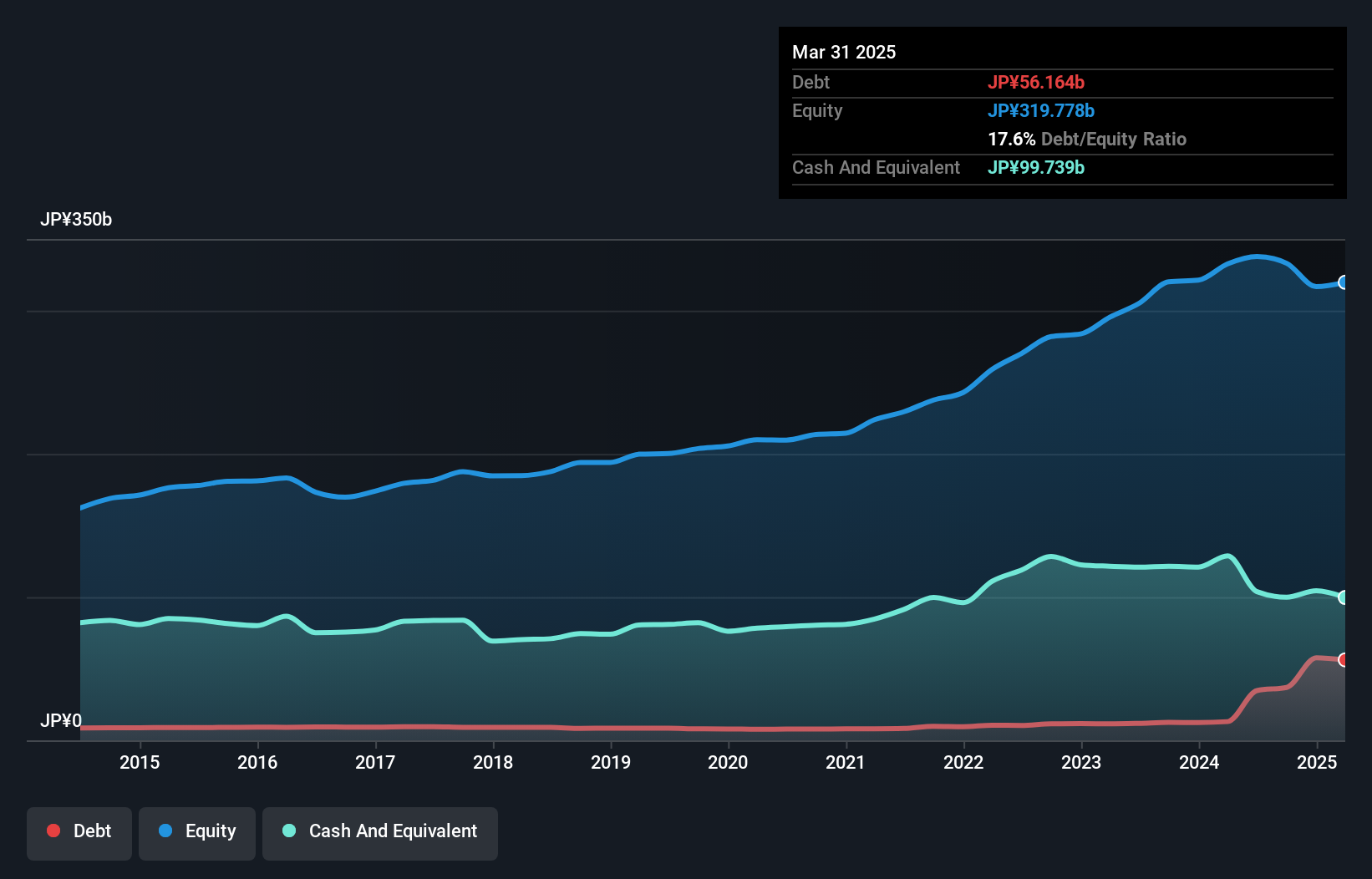Here's Why Hamamatsu Photonics K.K (TSE:6965) Can Manage Its Debt Responsibly - Simply Wall St News
Legendary fund manager Li Lu (who Charlie Munger backed) once said, 'The biggest investment risk is not the volatility of prices, but whether you will suffer a permanent loss of capital.' So it seems the smart money knows that debt - which is usually involved in bankruptcies - is a very important factor, when you assess how risky a company is. We note that (TSE:6965) does have debt on its balance sheet. But is this debt a concern to shareholders?
Debt and other liabilities become risky for a business when it cannot easily fulfill those obligations, either with free cash flow or by raising capital at an attractive price. Ultimately, if the company can't fulfill its legal obligations to repay debt, shareholders could walk away with nothing. However, a more frequent (but still costly) occurrence is where a company must issue shares at bargain-basement prices, permanently diluting shareholders, just to shore up its balance sheet. Of course, plenty of companies use debt to fund growth, without any negative consequences. The first thing to do when considering how much debt a business uses is to look at its cash and debt together.
The image below, which you can click on for greater detail, shows that at March 2025 Hamamatsu Photonics K.K had debt of JP¥56.2b, up from JP¥13.1b in one year. But it also has JP¥99.7b in cash to offset that, meaning it has JP¥43.6b net cash.

According to the last reported balance sheet, Hamamatsu Photonics K.K had liabilities of JP¥93.3b due within 12 months, and liabilities of JP¥23.3b due beyond 12 months. Offsetting this, it had JP¥99.7b in cash and JP¥46.4b in receivables that were due within 12 months. So it actually has JP¥29.5b more liquid assets than total liabilities.
This short term liquidity is a sign that Hamamatsu Photonics K.K could probably pay off its debt with ease, as its balance sheet is far from stretched. Succinctly put, Hamamatsu Photonics K.K boasts net cash, so it's fair to say it does not have a heavy debt load!
View our latest analysis for Hamamatsu Photonics K.K
In fact Hamamatsu Photonics K.K's saving grace is its low debt levels, because its EBIT has tanked 50% in the last twelve months. When it comes to paying off debt, falling earnings are no more useful than sugary sodas are for your health. The balance sheet is clearly the area to focus on when you are analysing debt. But ultimately the future profitability of the business will decide if Hamamatsu Photonics K.K can strengthen its balance sheet over time. So if you want to see what the professionals think, you might find this free report on analyst profit forecasts to be interesting.
Finally, a business needs free cash flow to pay off debt; accounting profits just don't cut it. Hamamatsu Photonics K.K may have net cash on the balance sheet, but it is still interesting to look at how well the business converts its earnings before interest and tax (EBIT) to free cash flow, because that will influence both its need for, and its capacity to manage debt. Looking at the most recent three years, Hamamatsu Photonics K.K recorded free cash flow of 28% of its EBIT, which is weaker than we'd expect. That weak cash conversion makes it more difficult to handle indebtedness.
While it is always sensible to investigate a company's debt, in this case Hamamatsu Photonics K.K has JP¥43.6b in net cash and a decent-looking balance sheet. So we are not troubled with Hamamatsu Photonics K.K's debt use. There's no doubt that we learn most about debt from the balance sheet. However, not all investment risk resides within the balance sheet - far from it. For instance, we've identified that you should be aware of.
When all is said and done, sometimes its easier to focus on companies that don't even need debt. Readers can access a list of growth stocks with zero net debt , right now.
Discover if Hamamatsu Photonics K.K might be undervalued or overvalued with our detailed analysis, featuring
Alternatively, email editorial-team (at) simplywallst.com.
This article by Simply Wall St is general in nature. We provide commentary based on historical data and analyst forecasts only using an unbiased methodology and our articles are not intended to be financial advice. It does not constitute a recommendation to buy or sell any stock, and does not take account of your objectives, or your financial situation. We aim to bring you long-term focused analysis driven by fundamental data. Note that our analysis may not factor in the latest price-sensitive company announcements or qualitative material. Simply Wall St has no position in any stocks mentioned.












